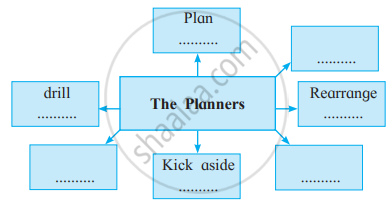Advertisements
Advertisements
Question
Answer the following question in 200-250 words:
Helen had a great love for animals and birds. Write about this aspect of her character.
Solution
Helen was very close to nature. Helen loved nature, and for her, it was her favourite companion, as it gave her solace. Even as a child, she learned most from nature and it was this love and understanding of the beauty of nature that Miss Sullivan utilized to educate her. There are instances when Helen describes how Miss Sullivan used to take her for walks wherein she used to teach her geography and other things using nature as a medium. Most of the most vivid memories of her childhood were related to nature, for example being stuck in the storm, realizing what words meant when she associated water, experiencing snow for the first time, etc. Hence it is safe to say that Helen shared a deep bond with nature. Helen's great love for animals is evident in her affinity towards books such as "The Jungle Book" and "Wild Animals I Have Known" where she felt a genuine interest in the animals themselves because they were real and not caricatures of men. On another note, as a deaf and blind child, Helen understood the beauty of mute creatures like birds and animals who might not have been able to speak but had a voice of their own. She enjoyed spending her time in their company or even reading about them.
APPEARS IN
RELATED QUESTIONS
Which pictures reflect gender equality? Write their numbers.
Read the poem and complete the web about the activities the planners do.

Read the lesson and name the following.
The Father of modern neurosurgery ______
Write a short monologue using one of the following ideas. Write down the monologue and present it in the class.
Yonamine’s father worrying about getting her married.
Write a short note on the following:
Prince Siddharth’s protected life.
Read the passage and name the following.
He was killed by a poisoned arrow that entered his heel.
A parody is a playful, comic imitation of a writer’s style. A parody is like a verbal cartoon. Compare the original poem and its parody given on page 35 using the following points:
|
How doth the little busy bee |
How doth the little crocodile (parody) |
| Choice of a subject (an animal) | __________________ |
| __________________ | __________________ |
| Number of lines and stanzas | __________________ |
| __________________ | __________________ |
| Same or similar constructions | __________________ |
| __________________ | __________________ |
| Tone of the poem | __________________ |
| __________________ | __________________ |
A man in ______ clothes stopped near him.
Why did Jana chase the squirrel?
Kamali gave her savings to______.
